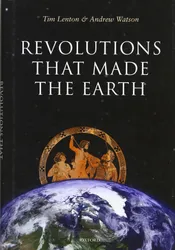This book explores the question of how likely it is that an “observer species” can arise on a planet like Earth, and the difficult transitions that life and the planet must go through to get there. By “observer species” they mean a species of intelligent, self-aware beings that are capable of asking questions about the universe and how they came to be. They mention the idea of the Fermi paradox, which is about why we haven’t detected evidence of any alien civilisations, despite the huge number of stars in our galaxy, many of which presumably have planets that could support life. They put forward a model, called the Critical Steps Model, of the development of life leading to an observer species which assumes that there are several difficult (very unlikely or almost impossible) stages that a planet must go through in order to end up with an observer species. As well as the difficulty of achieving a step in the first place (such as oxygenic photosynthesis, in which organisms develop the ability to use sunlight to absorb carbon dioxide and produce oxygen) they also talk about the difficulty of life on earth surviving the consequences of that step (such as oxygen, which is toxic to most life, building up in the atmosphere). At the end of the book, they talk about the possibly unlikely step of an intelligent species such as our own evolving. The consequences of that step are still being played out on Earth, and it’s unclear how or whether life on Earth will successfully adapt to this step, given the rapid changes we are making to our planet.
The book is structured like a series of scientific papers, one per chapter, summarising and explaining the main research findings in that area, with references listed at the end of each chapter. The authors go into quite a lot of detail in each chapter about the relevant geology, physics and chemistry, and convey competing interpretations of the evidence as well as their own opinions.
There is a lot of information about various atmospheric and geological cycles, such as the carbon and nitrogen cycles. The book covers feedback mechanisms that work to stabilise the earth’s environment for life, and those that can destabilise it, such as tipping it into “snowball earth” states (and how these eventually come to an end). I learned a lot about the methods used for dating fossils and how we can make educated guesses about when certain types of life evolved, and when the critical steps may have occurred.
I was quite surprised to learn that the Earth is moving towards the end of its time in the habitable zone around our sun, based on the lifecycle of similar stars. One argument in favour of the idea that observer species are unlikely and rare is that we have only evolved towards the end of Earth’s habitable period; if it was easy for observer species to develop, it might have happened sooner in Earth’s lifetime. I was also really interested to learn about the ways in which life can become part of the feedback mechanisms that help maintain conditions that support life.
I particularly enjoyed the deep, detailed analysis of the topic in each chapter. This book contains proper science and it is a challenging, dense book to read. Despite this, I think the authors explain complex topics well for a general audience, although I do think it would be very tough going without some science education. In particular, I enjoyed the fact that they don’t simplify things when there is disagreement among scientists. This can make it harder to follow, but I think it gives the reader a much clearer view of the limits of our knowledge (at the time the book was written).
While each chapter is very well structured in itself, the overall structure of the book can get a bit lost in the details. They talk about the Fermi paradox and the Critical Steps Model at the start, but don’t really cycle back to these topics at the end to tie things up. I was expecting by the end of the book to understand which transitions the authors believed were critical steps, and to have seen convincing arguments for each one. For me, they weren’t quite clear enough about this, and I came away without a clear understanding of what they were trying to achieve.
However, as a wide-ranging survey of the recent science on the development of life on earth and the stages that life and the planet has gone through, the book is really successful. I really enjoyed it and learned a lot, even if I would struggle to come up with a succinct description of what the authors are actually trying to achieve with it.
